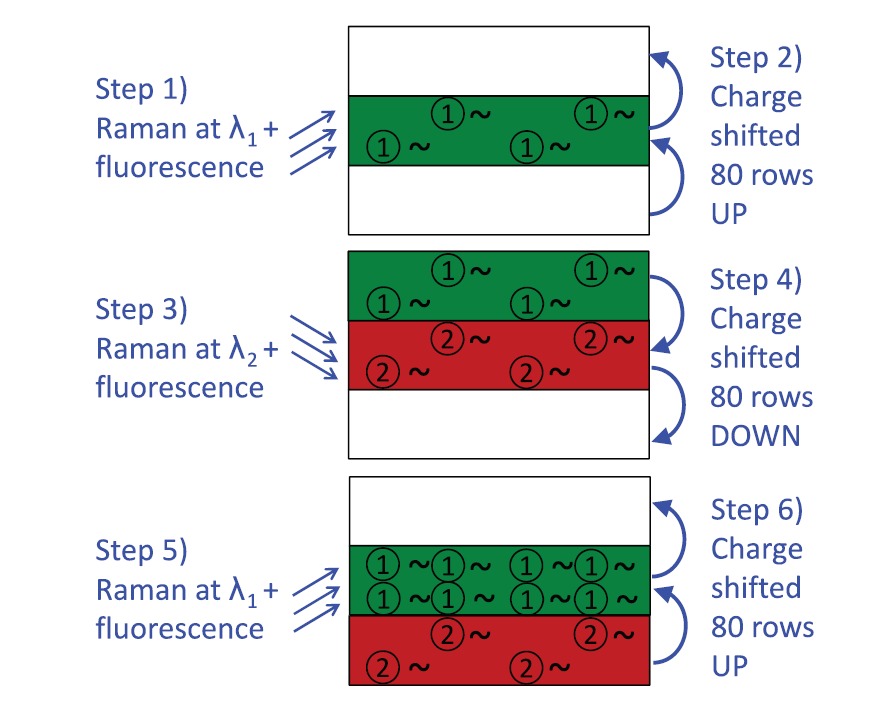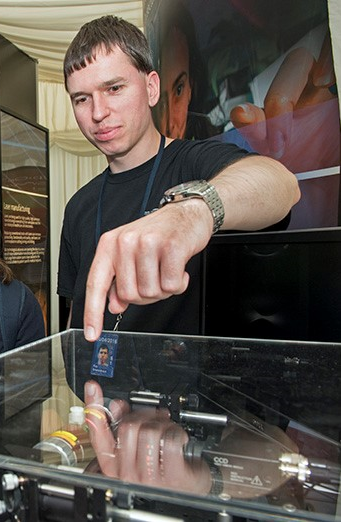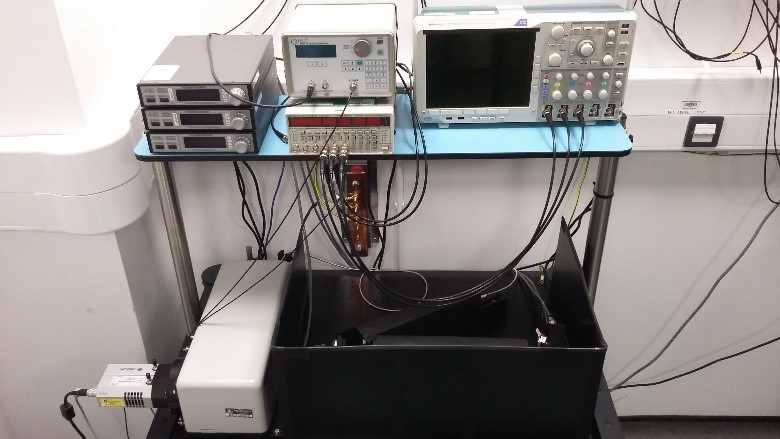- 2020 William F. Meggers Award from the Society for Applied Spectroscopy
This recognition goes to CLF and Ferdinand-Braun-Institut team Kay Sowoidnich, Michael Towrie, Martin Maiwald, Bernd Sumpf, and Pavel Matousek for their paper, titled "Shifted Excitation Raman Difference Spectroscopy with Charge-Shifting Charge-Coupled Device (CCD) Lock-In Detection". Their technique enables superior performance for application with handheld scanning devices in outdoor or variable lighting conditions. The paper demonstrates increased reproducibility between repeat data of heterogeneous samples, improved data reconstruction, and higher signal-to-background-noise-ratio. This new innovation can potentially also be used for discriminating healthy cells from cancerous in non-invasive tissue scanning and can deliver sub-surface inspection. The work is the outcome of a Proof-of-Concept project funded by STFC's Business and Innovation Directorate.
Raman spectroscopy is an optical technique based on the excitation of molecular vibrations within the sample material via inelastic scattering of photons allowing one to obtain chemically specific information from a variety of specimens. The technique has a wide range of applications including material characterisation, explosives detection, food analysis, medical diagnosis, forensics, cultural heritage and extra-terrestrial sample investigation in space missions, to name just a few. However, extended applications of Raman spectroscopy outside the usual, controlled laboratory environment are limited by the quality of data collected being severely affected by ambient and background light variations as well as object or detector movement.
Recent progress in the technique has given rise to the desire for real-time information via in-situ measurements - existing Raman manufacturers are now marketing portable/handheld systems. However, the interference of fluorescence and undesired stray light with useful signals is seen as a major issue by practitioners.
The team developed a novel solution to overcome this problem by combining Shifted Excitation Raman Difference Spectroscopy (SERDS) with charge-shifting CCD read-out. SERDS involves fast switching between collecting Raman1+background signal, and Raman2+background signal, where Raman1 and Raman2 are two distinct Raman spectra excited by two slightly different laser wavelengths. A subtraction of one from the other removes the background interference, from which the wanted Raman spectra data can be reconstructed. Charge-shifting CCDs work by rapidly alternating movement of the charge on the CCD chip, thereby enabling fast lock‐in detection of signals on the CCD. They can read-out information at much higher rates (1 kHz up to 30 kHz) than conventional CCDs (~ 5 -10 Hz), therefore offering the chance to significantly improve the SERDS technique. The combined effect delivers Raman spectra that are clearly and rapidly resolved, even when the background is varying quickly – a crucial innovation demonstration for handheld devices.


Figure 1: Illustration of the charge shifting SERDS principle. Credit: Applied Spectroscopy
2019, Vol. 73(11) 1265–1276
In one of the set of experiments, six different rock types were scanned while being held by lead author Kay Sowoidnich, to mimic the irregular movement of hand-held Raman devices. Results demonstrated the superior performance of the technology, including increased reproducibility between repeat spectra of heterogeneous samples, improved spectral reconstruction, and higher signal-to-background-noise-ratio. In addition to its ambient light rejection capabilities, this new innovation can also be used for highly accurate multivariate analysis (e.g. discriminating healthy cells from cancerous in non-invasive tissue scanning), and when combined with Spatially Offset Raman Spectroscopy can deliver sub-surface inspection.
The award has been formally presented today, 14th October 2020, at SAS's National Meeting during SciX 2020, which is being held virtually. Kay Sowoidnich has presented a plenary lecture on the awarded paper.

Figure 2: Kay Sowoidnich demonstrating Raman spectroscopy at an outreach event while working at the CLF

Figure 3: The CLF's charge-shifting SERDS proof-of-concept technology
